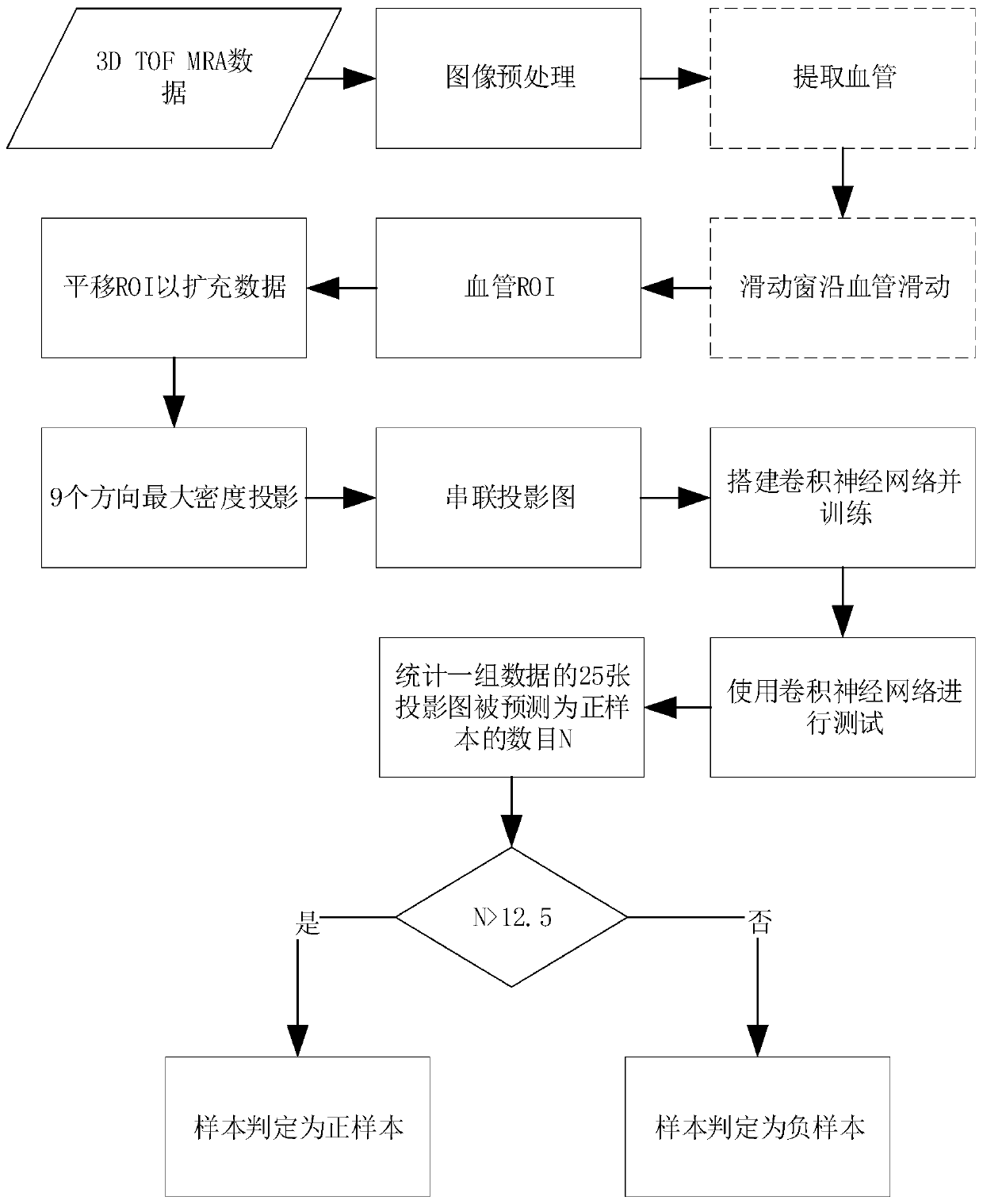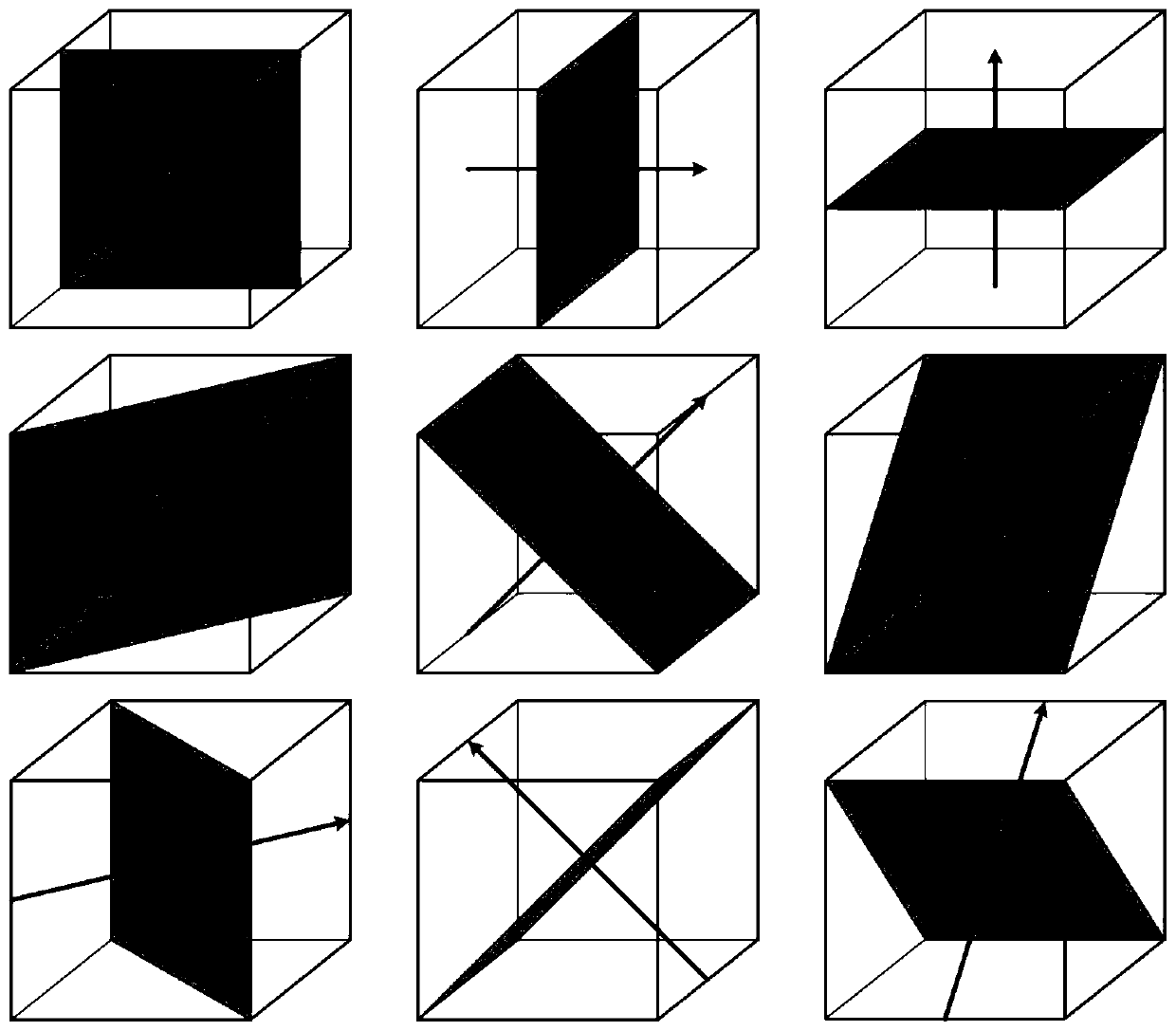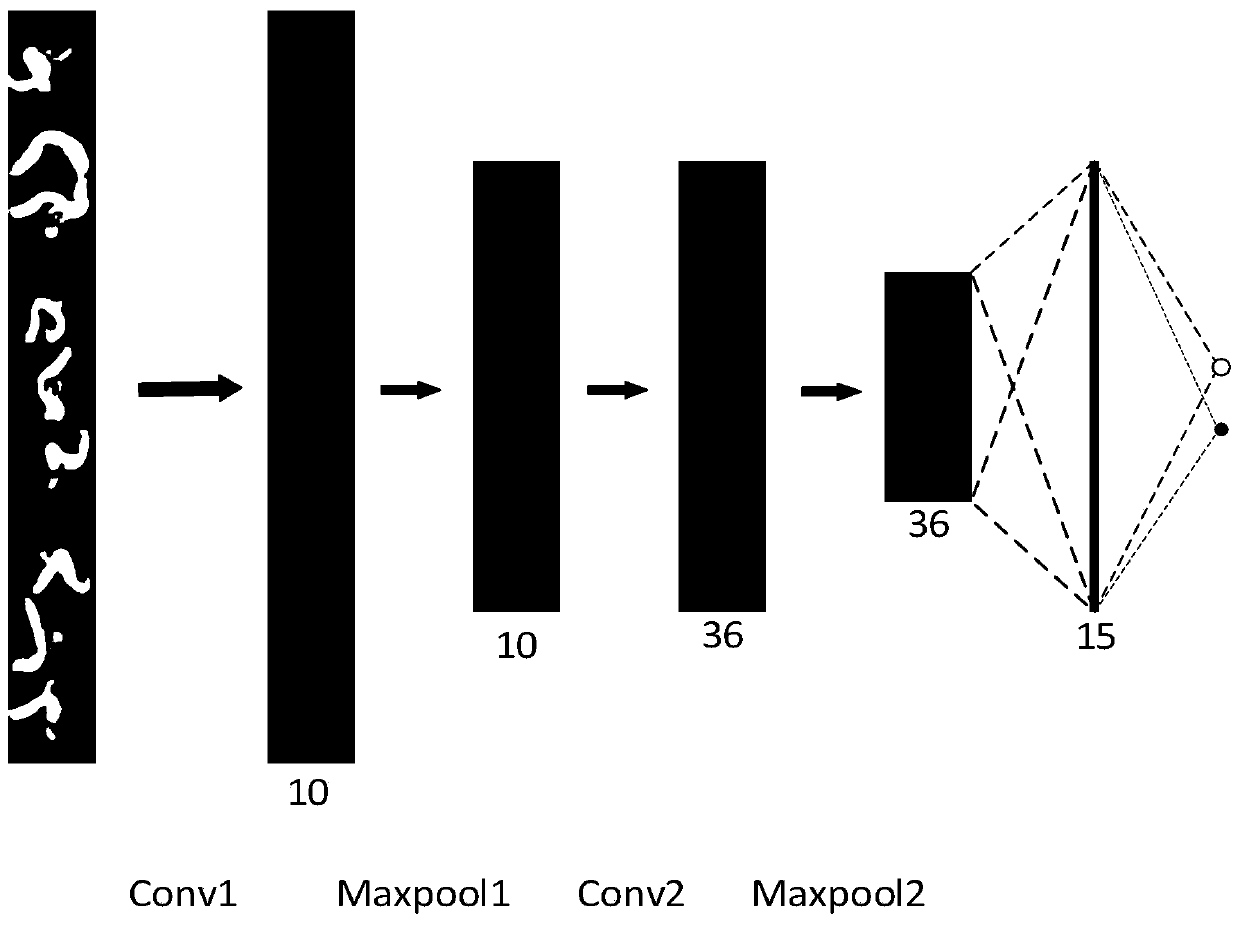Intracranial aneurysm detection method and system based on convolutional neural network
A convolutional neural network and intracranial aneurysm technology, applied in the field of medical image processing, can solve the problems of less medical data, low sensitivity, and heavy workload of intracranial aneurysms
- Summary
- Abstract
- Description
- Claims
- Application Information
AI Technical Summary
Problems solved by technology
Method used
Image
Examples
Embodiment 1
[0072] Generally speaking, when the present invention classifies aneurysms, it first extracts the blood vessels to obtain the position information of the blood vessels, and then uses the position information of the blood vessels to slide and select small cube blocks with the centerline of the blood vessels as the sliding route. Blocks are subjected to maximum density projection in nine directions to obtain a MIP map. Using the MIP map as input, the two-dimensional convolutional neural network is used to classify the MIP map, and the classification result is obtained. The classification result reflects whether there is an aneurysm in the cube block.
[0073] Such as figure 1 As shown, the intracranial aneurysm recognition method based on the MIP image and the convolutional neural network in the embodiment of the present invention includes the following steps:
[0074] (1) Perform preprocessing such as grayscale stretching and normalization on the three-dimensional time-flight ...
PUM
 Login to View More
Login to View More Abstract
Description
Claims
Application Information
 Login to View More
Login to View More - R&D
- Intellectual Property
- Life Sciences
- Materials
- Tech Scout
- Unparalleled Data Quality
- Higher Quality Content
- 60% Fewer Hallucinations
Browse by: Latest US Patents, China's latest patents, Technical Efficacy Thesaurus, Application Domain, Technology Topic, Popular Technical Reports.
© 2025 PatSnap. All rights reserved.Legal|Privacy policy|Modern Slavery Act Transparency Statement|Sitemap|About US| Contact US: help@patsnap.com



